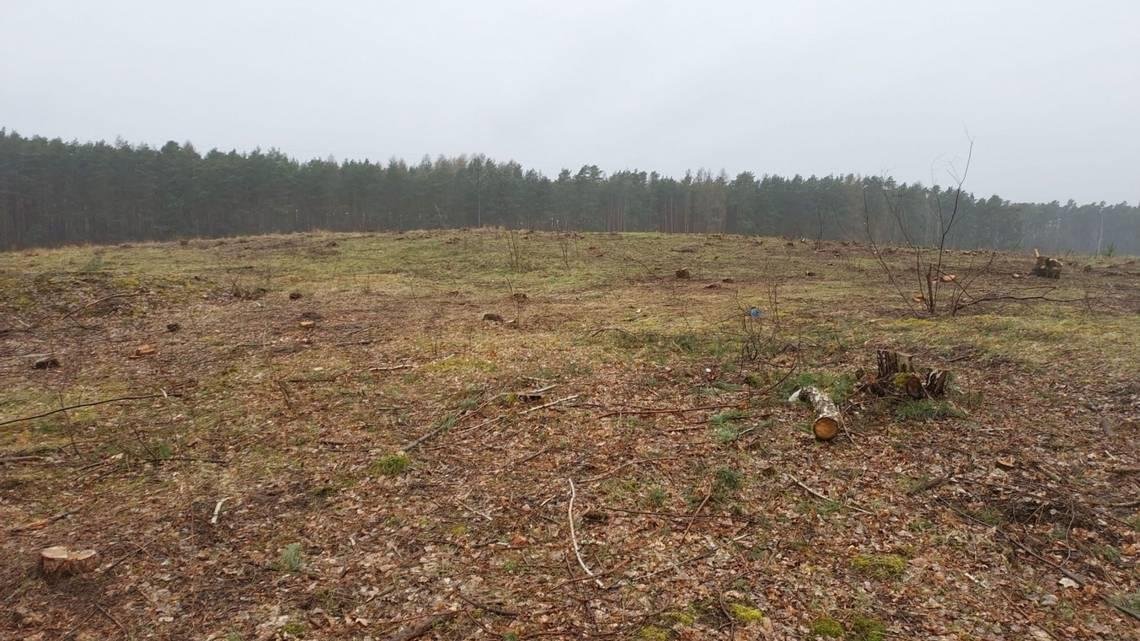Polish archaeologists find that Żagań-Lutnia5 is an Iron Age stronghold
Archaeologists using ground-penetrating radar (GPR) and magnetic methods have uncovered crucial details about Żagań-Lutnia5, an archaeological site in southwestern Poland. This site, initially discovered in the 1960s near Żagań, has long puzzled experts regarding its purpose and age.
 Archaeologists in Poland determined the purpose of a 2,400-year-old settlement decades after it was discovered. Credit: Provincial Office for the Protection of Monuments
Archaeologists in Poland determined the purpose of a 2,400-year-old settlement decades after it was discovered. Credit: Provincial Office for the Protection of Monuments
Led by Dr. Arkadiusz Michalak of the Archaeological Museum of the Middle Oder River, the study reveals that the monument served as a defensive settlement during the Iron Age. Two sets of magnetic anomalies detected in the ground signify remnants of earthen and wooden fortifications, confirming its defensive nature.
The hillfort, dating back to the Hallstatt period of the Iron Age (approximately 1200 BCE to 450 BCE), is associated with the Białowieża group of the Lusatian urnfield culture. This culture, known for cremating and burying its deceased in urns, was prevalent in the region during that era.
Excavations at the site have uncovered four cultural layers, including remains of huts, hearths, and a burnt layer suggesting a period of conflict. Dr. Michalak notes that previous excavations in 1990, albeit limited, provided valuable insights into the site’s history. However, further research is needed to fully understand the structure of the rampart and conduct chronological studies.
 Researchers used ground-penetrating radar (GPR) and magnetic methods to identify the underground defensive ruins. Credit: Provincial Office for the Protection of Monuments
Researchers used ground-penetrating radar (GPR) and magnetic methods to identify the underground defensive ruins. Credit: Provincial Office for the Protection of Monuments
The Żagań-Lutnia5 site’s inclusion in the catalog of verified Early Iron Age strongholds in the Lubusz Voivodeship underscores its archaeological significance. Despite challenges such as the presence of a sewage collector built in the 1990s limiting research in certain areas, ongoing efforts aim to unravel more mysteries surrounding this ancient settlement.
Dr. Michalak, reflecting on the importance of the recent findings, emphasizes the need to compile materials from previous research efforts. Securing external funding for excavation research remains a priority.
Related Post
The entire tomb is filled with signs and symbols that mention Queen Nefertiti and after some time passed and linguistic experts managed to decipher the stories told here, the team was baffled.
The mystery of the Solar Temple of Abu Gurab and its “Star Gate” comes to light
Thuya, the mother of Queen Tiye, left a monumental legacy by becoming the grandmother of Akhenaten and Tutankhamun.
The oldest traditions lead us to believe that blacks were the first inhabitants of Mexico.
The REAL face of King Tut: The pharaoh had feminine hips, clubfoot, and protruding teeth according to the ‘virtual autopsy,’ which also revealed that his parents were brother and sister.
The “oldest gold of humanity” was found in the Varna necropolis, on the Bulgarian Black Sea coast
